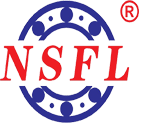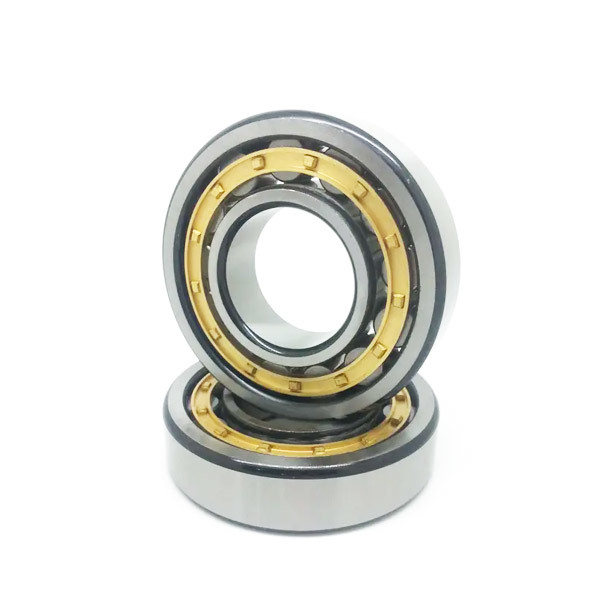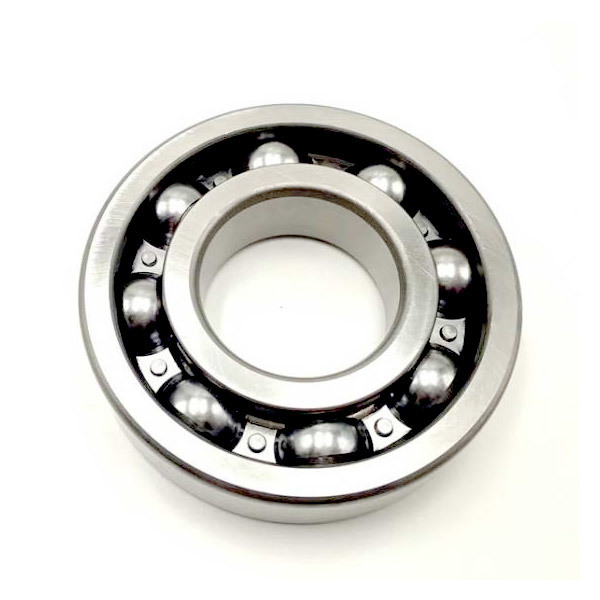06
2025
-
08
The Evolution of Self-Aligning Ball Bearings in Modern Engineering
The Evolution of Self-Aligning Ball Bearings in Modern Engineering Table of Contents 1. Introduction to Self-Aligning Ball Bearings 2. Historical Background of Self-Aligning Ball Bearings 3. Design Innovations in Self-Aligning Ball Bearings 4. Applications of Self-Aligning Ball Bearings in Various Industries 5. Advantages of Self-Aligning Ball Bearings 6. Challenges in the
The Evolution of Self-Aligning Ball Bearings in Modern Engineering
Table of Contents
- 1. Introduction to Self-Aligning Ball Bearings
- 2. Historical Background of Self-Aligning Ball Bearings
- 3. Design Innovations in Self-Aligning Ball Bearings
- 4. Applications of Self-Aligning Ball Bearings in Various Industries
- 5. Advantages of Self-Aligning Ball Bearings
- 6. Challenges in the Use of Self-Aligning Ball Bearings
- 7. The Future of Self-Aligning Ball Bearings
- 8. Conclusion
- 9. Frequently Asked Questions
1. Introduction to Self-Aligning Ball Bearings
Self-aligning ball bearings have revolutionized the engineering sector by providing solutions to alignment issues commonly encountered in rotating machinery. These bearings are designed to accommodate misalignment resulting from shaft deflections and mounting errors. Their unique construction features two rows of balls that allow for self-adjustment, making them indispensable in various applications.
2. Historical Background of Self-Aligning Ball Bearings
The inception of self-aligning ball bearings can be traced back to the early 20th century when engineers sought to improve the reliability and efficiency of machinery. The first self-aligning ball bearing was developed in 1907 by the Swedish engineer Sven Wingquist, who aimed to mitigate the challenges posed by misalignment in traditional bearings. This innovation laid the groundwork for the evolution of bearing technology, setting a standard for performance and durability.
Over the decades, self-aligning ball bearings have evolved significantly. The introduction of new materials, improved manufacturing processes, and advanced lubrication systems have enhanced their performance characteristics, leading to increased adoption across diverse industrial sectors.
3. Design Innovations in Self-Aligning Ball Bearings
Modern self-aligning ball bearings feature several design innovations that enhance their functionality and performance. The design typically includes:
3.1. Spherical Outer Ring
The outer ring of self-aligning ball bearings has a spherical shape, allowing for angular misalignment without affecting performance. This unique design ensures that the bearing can accommodate shaft misalignments up to a certain degree.
3.2. Double Row Configuration
Self-aligning ball bearings consist of two rows of balls. This configuration distributes loads more evenly and increases the bearing's load-carrying capacity, making it suitable for heavy-duty applications.
3.3. Enhanced Lubrication Systems
Modern bearings incorporate advanced lubrication systems that extend service life and reduce friction. These systems often use synthetic lubricants, which perform better under extreme temperatures and loads compared to traditional oils.
3.4. Advanced Materials
The use of high-quality materials such as stainless steel and special alloys has significantly improved the fatigue resistance and overall performance of self-aligning ball bearings. These materials enhance durability, enabling bearings to perform in harsh environments.
4. Applications of Self-Aligning Ball Bearings in Various Industries
Self-aligning ball bearings are widely utilized across multiple industries due to their versatility and reliability. Some of the key applications include:
4.1. Manufacturing and Machinery
In manufacturing environments, self-aligning ball bearings are commonly found in conveyor systems, gearboxes, and pumps. Their ability to tolerate misalignment makes them ideal for dynamic applications where precision is essential.
4.2. Automotive Industry
The automotive sector employs self-aligning ball bearings in various components such as engines, transmissions, and wheel assemblies. Their robustness and reliability contribute to the overall efficiency and safety of vehicles.
4.3. Aerospace Applications
In the aerospace industry, self-aligning ball bearings are crucial for aircraft engines and landing gear, where they encounter extreme conditions. Their lightweight nature and ability to withstand significant forces are vital for aircraft performance.
4.4. Agricultural Machinery
Self-aligning ball bearings are employed in farming equipment like tractors and harvesters. Their resilience and capacity to handle difficult terrain make them essential for agricultural operations.
4.5. Renewable Energy
With the growing focus on renewable energy sources, self-aligning ball bearings play a pivotal role in wind turbines and solar panel tracking systems. Their durability ensures optimal performance in sustainable energy production.
5. Advantages of Self-Aligning Ball Bearings
The benefits of self-aligning ball bearings are manifold, making them a preferred choice in many engineering applications:
5.1. Misalignment Compensation
Their design allows for self-adjustment in response to misalignment, which reduces wear and tear on machinery and minimizes maintenance requirements.
5.2. Increased Load Capacity
With a double row of balls, these bearings can handle higher loads compared to conventional bearings, making them suitable for heavy machinery.
5.3. Enhanced Durability
The advanced materials and lubricants used in self-aligning ball bearings contribute to their longevity, resulting in lower replacement costs and reduced downtime.
5.4. Low Friction
The innovative lubrication systems employed in modern self-aligning ball bearings minimize friction, enhancing efficiency and performance across various applications.
6. Challenges in the Use of Self-Aligning Ball Bearings
Despite their numerous advantages, self-aligning ball bearings also face certain challenges:
6.1. Sensitivity to Contamination
Self-aligning ball bearings can be sensitive to contaminants such as dust and moisture, which can compromise their performance. Proper seals and maintenance are crucial to mitigate this issue.
6.2. Limited Misalignment Tolerance
While these bearings are designed to accommodate some degree of misalignment, excessive misalignment can lead to premature failure. It is essential to monitor alignment regularly.
6.3. Cost Considerations
The advanced materials and technologies used in manufacturing self-aligning ball bearings can result in higher upfront costs. However, their longevity often justifies the initial investment.
7. The Future of Self-Aligning Ball Bearings
The future of self-aligning ball bearings looks promising, with ongoing research and development aimed at further enhancing their performance. Innovations in materials science, such as the integration of composites and smart technologies, are expected to revolutionize their functionality. Additionally, the demand for energy-efficient solutions in various industries will drive the evolution of these bearings, ensuring they remain integral to modern engineering.
8. Conclusion
Self-aligning ball bearings have undergone significant evolution since their inception, transforming into crucial components in modern engineering. Their unique design, enhanced by innovations in materials and lubrication, positions them as reliable solutions for a myriad of applications. As industries continue to advance, self-aligning ball bearings will undoubtedly play a vital role in driving efficiency and performance in machinery.
9. Frequently Asked Questions
9.1. What are self-aligning ball bearings?
Self-aligning ball bearings are specialized bearings designed to accommodate misalignment between the shaft and housing, featuring a spherical outer ring that allows for self-adjustment.
9.2. Where are self-aligning ball bearings commonly used?
They are widely used in various industries, including manufacturing, automotive, aerospace, agriculture, and renewable energy applications.
9.3. What are the key advantages of self-aligning ball bearings?
The primary advantages include misalignment compensation, increased load capacity, enhanced durability, and low friction.
9.4. What challenges do self-aligning ball bearings face?
Challenges include sensitivity to contamination, limited misalignment tolerance, and higher initial cost compared to traditional bearings.
9.5. What is the future of self-aligning ball bearings?
The future is focused on advancements in materials and smart technologies, aimed at improving performance and efficiency in various engineering applications.
RELATED BLOGS
10% DISCOUNT FOR NEW CUSTOMERS

WhatsApp:+8613211157555
Tel: +8613211157555
Address:Room 1106, 11th Floor, No. 23, Fengshan West Road, Jinbang Community, Daliang Street, Shunde District, Foshan City, Guangdong Province
Copyright 2025 Schaeffler (Guangdong) Transmission Technology Co., Ltd. SEO Business license




